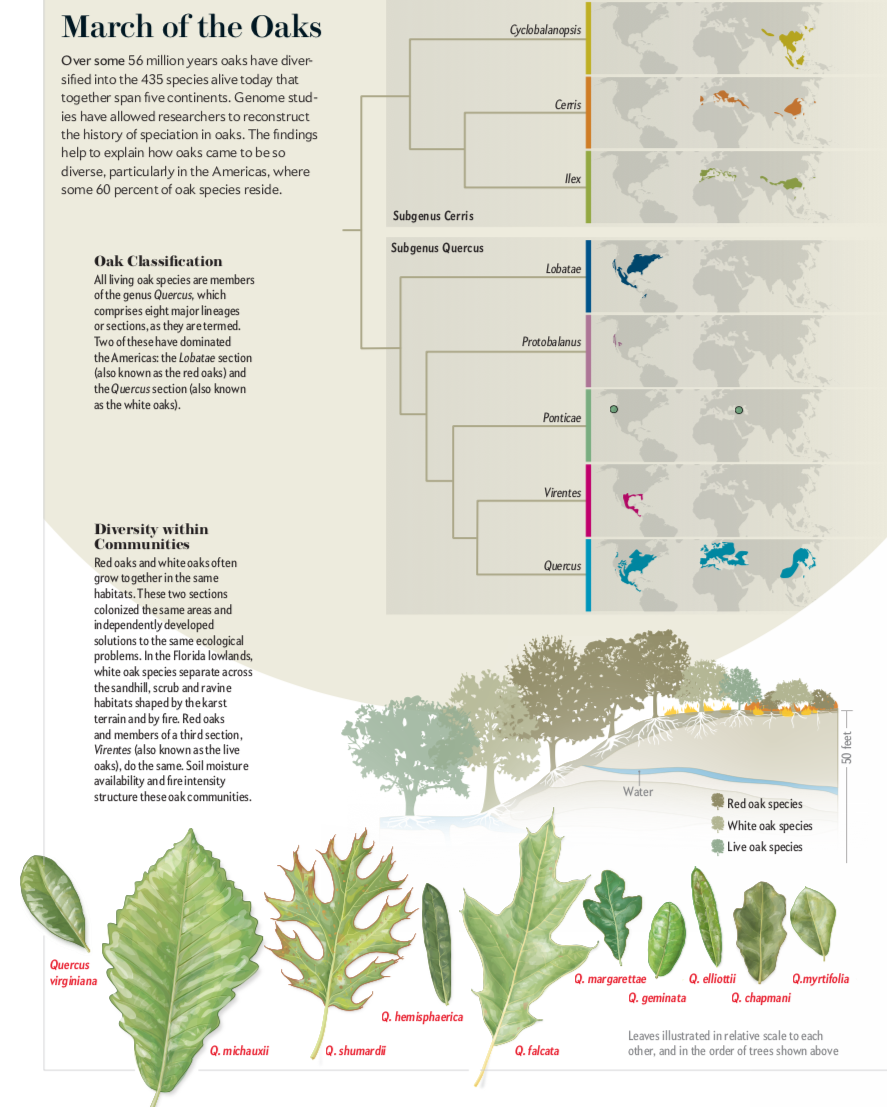The causes and consequences of plant biodiversity across scales in a rapidly changing world
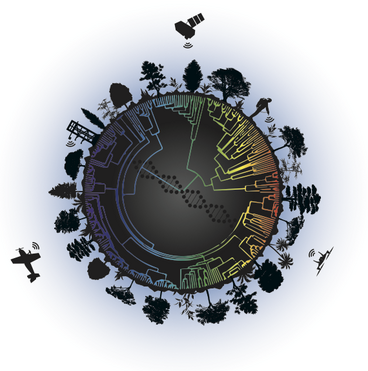
NSF Biology Integration Institute We use spectral biology and predictive models to understand how variation at one biological scale interacts with environmental change to give rise to emergent properties at the next biological scale, ultimately influencing biodiversity from organisms to the tree of life in ecological communities and across the biosphere.
Our goal is to train the next generation of integrative biologists who apply spectral biology to understanding how life’s variation at the smallest scales influences biodiversity at all other scales, and how global change, in turn, impacts the processes that drive diversity at all scales.
Forest diversity and ecosystem function
The Forest and Biodiversity (FAB) experiment at Cedar Creek Ecosystem Science Reserve
The experiment has two phases. FAB 1 is a high density experiment with 12 species planted in different combinations of functional and phylogenetic diversity--with the goal of teasing these apart--for 1, 2,5 and 12 species combinations. A study from Grossman et al. (2018) has shown that when species are grown in mixtures they show greater productivity than expected based on growth of those same species in monocultures--called overyielding or the net biodiversity effect--and that functional traits of species predict overyielding. Species richness, functional diversity and phylogenetic diversity are all strong predictors of productivity. FAB 1 is part of the IDENT and TreeDivNet forest diversity networks. In a similar IDENT tree diversity experiment in Cloquet Minnesota, Williams et al. (2020) showed that the net biodiversity effect could be remotely sensed from airborne hyperspectral imagery. Facilitation by neighbors can reduce light stress in some focal species, preventing damage from photoinhibition. This is one of the mechanisms hypothesized to contribute to overyielding, which Shan Kothari tested in his doctoral work. Williams et al. (2017) showed that complementarity in canopy architecture--including plastic shifts in how canopies of different species fit together to absorb more total light and total carbon in mixture than in monocultures--explains the net biodiversity effect. Grossman et al. 2020 further showed that the diversity of mixtures, particularly their functional diversity, influences decomposition, slowing down the rate of labile carbon cycling in forest soils.
FAB 2 is a low density experiment with the same 12 species, again planted in combinations of functional and phylogenetic diversity that aim to separate these dimensions of diversity in combinations of 1, 2 4, 6 and 12 species. Plots are 10 x 10 m. In addition, monocultures and 12 species diversity plots are planted again in large 20 x 20 m plots to test for species effects on ecosystem function. NSF DEB 1831944
Protection of biodiversity and ecosystems services through early detection of tree disease using hyperspectral remote sensing

Minnesota Invasive Terrestrial Pests and Pathogens Center Exotic pathogens currently pose threats to temperate forests at an alarming rate. To save trees and protect ecosystem services, our team is devloping novel methods for the detection of diseases threatening Minnesota trees using remote sensing technology. These tools will have the potential to contribute to sustaining forest health nationally and globally. The initial stage of this work, focused on seedlings in controlled environments, has shown that oak wilt can be differentiated from bur oak blight and from drought stress (Fallon et al. 2020). The project is funded through the University of Minnesota Grand Challenges Initiative with collaborators Jennifer Juzwik, Rebecca Montgomery, Phil Townsend and John Gamon. Post doctoral associate Gerard Sapes is currently leading the project developing models to detect disease by comparing field experiments and airborne imagery of diseased trees. A second phase of the project using satellite data is funded by the US Forest Service. Photo credits: J. Cavender-Bares, B. Schwingle.
Linking remotely sensed optical diversity to genetic, phylogenetic and functional diversity to predict ecosystem processes
Our goal is to apply novel methods to test hypotheses linking dimensions of diversity in ecosystems examining plants aboveground and soil organisms belowground.
NSF Dimensions of Biodiversity Monitoring biodiversity and understanding its consequences for ecosystem and global processes are critical challenges in the face of rapid global change. However, there are constraints on measuring biodiversity imposed by limited research funding. Developing less expensive methods that can be used comprehensively in space and time will significantly advance biodiversity research. Remote sensing offers promise in this regard. Plants display themselves towards the sky in contrasting ways based on their evolutionary history, their genetic make-up, their form, phenology and the nature of their interactions with the environment. Differences among plants in these aspects can be detected by optical sampling, allowing remote sensing to assess diversity.
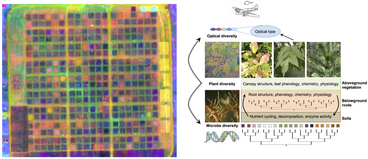
We used three biodiversity manipulations at the Cedar Creek Ecosystem Science Reserve that vary genotypes within species, species with different functions and responses to resources, and species from different evolutionary lineages to test whether these kinds of diversity can be detected remotely at multiple spatial scales. Project scientists from four institutions, including the University of Minnesota, the University of Wisconsin, the University of Nebraska-Lincoln and Appalachian State University are investigating the nature of linkages between plant biodiversity, soil microbe diversity and ecosystem function. These efforts serve in the development of airborne and satellite platforms that can routinely monitor biodiversity. NSF-NASA DEB-1342872. The project resulted in a 2020 open access book on Remote Sensing of Plant Biodiversity (Cavender-Bares, Gamon, Townsend eds.)
NIMBioS Working Group on Remote sensing of biodiversity
From leaf optical spectra to the tree of life

Remote sensing of biodiversity is critical at a time when the Earth's biodiversity loss due to human activities is accelerating at an unprecedented rate. The potential exists to inventory the diversity of traits associated with terrestrial biodiversity. Spectral data and the functional traits they predict can be linked to phylogenetic data as a means to estimate changes in biodiversity patterns globally. However, the mathematical models and computational approaches to integrate multiple complex multidimensional datasets are underdeveloped. We bring together biological and computational experts from three disciplines—remote sensing and leaf optics, plant functional biology and systematics—to develop a framework and set of computational tools for linking spectral data, functional traits, and phylogenetics. In a ground-breaking study, Meireles et al. 2020 showed that leaf reflectance spectra are tightly coupled to the tree of life and can distinguish lineages at all phylogenetic scales. However, the spectral regions most strongly associated with phylogeny vary among lineages. Different spectral regions evolve at different rates and under different constraint levels, mirroring the evolution of their underlying traits. Our goal is to transform the ability of humanity to detect and interpret the changing functional biodiversity of Planet Earth.
Alternative ecological futures for the American Residential Macrosystem
We are testing the hypothesis that human impacts in and around cities causes homogenization of the biota, altering functional and phylogenetic diversity patterns, ecological structure, and ecosystem functions relevant to carbon and nitrogen dynamics, with continental scale implications.
Urban, suburban and exurban environments are important ecosystems and their extent is increasing in the U.S. The conversion of wild or managed ecosystems to urban ecosystems is resulting in phylogenetic, functional and ecosystem homogenization across cities, where neighborhoods in very different parts of the country have similar patterns of roads, residential lots, commercial areas and aquatic features. The research provides a framework for understanding the impacts of urban land use change from local to continental scales utilizing datasets ranging from household surveys to regional-scale remote sensing across six metropolitan statistical areas (MSA) that cover the major climatic regions of the US (Phoenix, AZ, Miami, FL, Baltimore, MD, Boston, MA, St. Paul, MN and Los Angeles, CA). We seek to determine how household characteristics correlate with landscaping decisions, land management practices and ecological structure and functions at local, regional and continental scales. We are testing the hypothesis that both biophysical (e.g., plant dispersal) and social (e.g. regulations, preferences) drivers will create the potential for significant ecological change in the American Residential Macrosystem despite institutions, norms, values, and commercial drivers that act as stabilizing forces resisting change. This research advances understanding of an important and increasingly common ecosystem type ("suburbia") and the consequences to diversity, carbon storage and nitrogen pollution at multiple scales. Cavender-Bares et al. 2020 showed that in the Twin Cities the plant species that people plant in their yard depend on what is available from commercial nurseries and that cultivated plant diversity patterns in yards are driven largely by human preferences while spontaneously growing species depend on natural ecological processes. Data from this study are openly accessible. Padulles-Cubino et al. 2020 showed in a series of studies across cities that residential yards were functionally more homogeneous in α- and β-diversity than natural areas near these cities. However, wildlife-certified yards were functionally more similar to natural areas than lawn-dominated yard types.
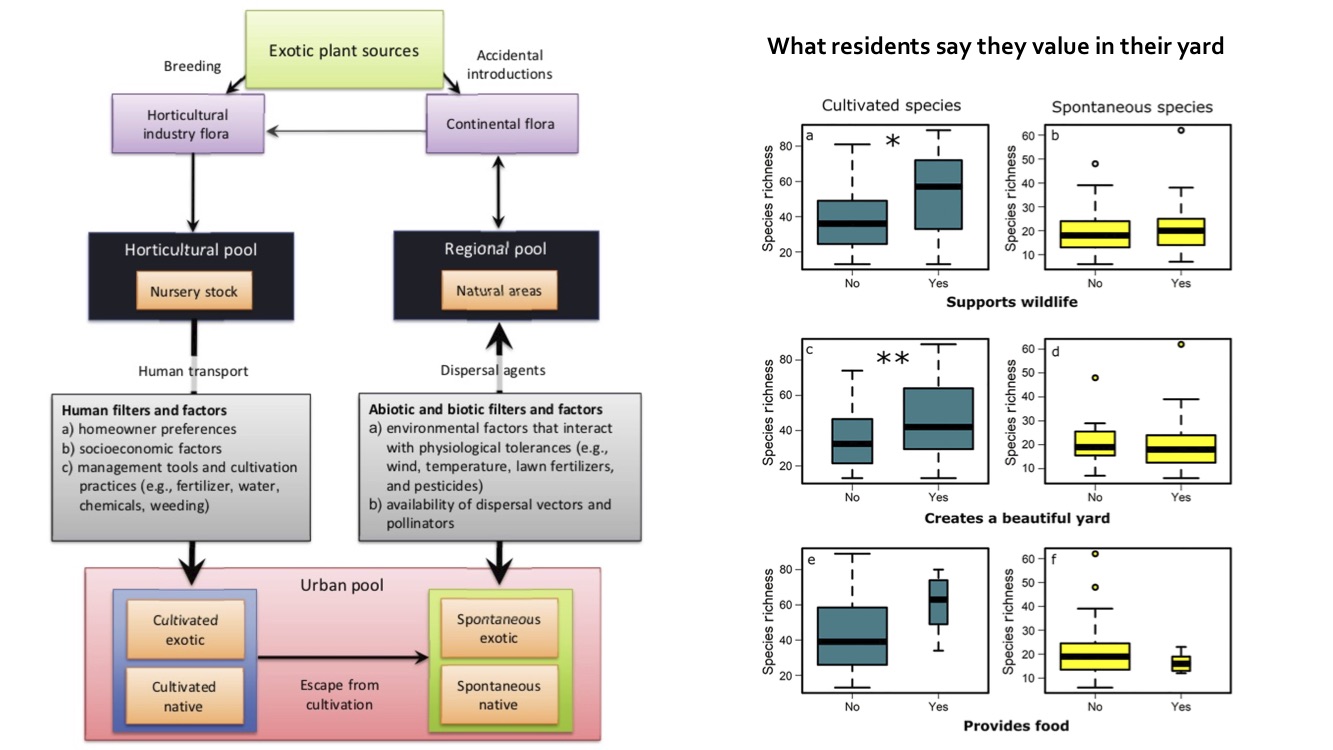
Adaptive differentiation, selection and water use of a seasonally dry tropical oak: implications for global change
Using genetic and physiological approaches to characterize patterns of natural selection and adaptive differentiation among populations from contrasting climatic regimes under natural and experimentally imposed water limitation.
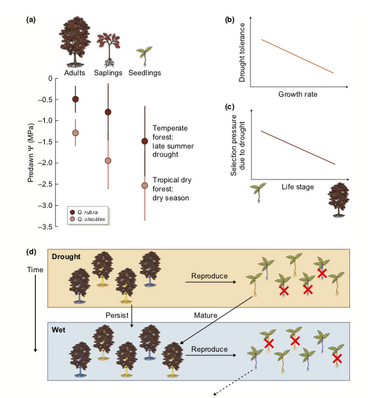
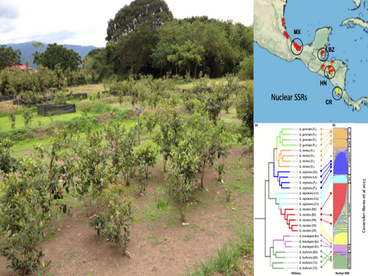
Climate change will alter key aspects of the environment for plants, such as temperature and water availability. Very little is known about how plants will contend with these changes, particularly species that are difficult to study, such as long-lived tropical trees. This project examines short-term physiological responses and the potential for long-term evolutionary changes in response to experimental manipulations of precipitation in populations of a tropical oak species that occur in different climates in Central America. We set up common gardens in Zamorano Honduras and the Area Conservacion Guanacaste in Costa Rica to investigate the extent to which these populations are adapted to the climate they currently experience and their potential response to climates that are similar to those predicted for the future. We examined the physiological mechanisms that enhance or limit adaptation to altered climates in this tropical tree. Genome-wide molecular markers reveal the phylogeographic history of the live oaks and enable reconstruction of evolutionary shifts in plant function (Cavender-Bares et al. 2015). This work showed that increasing drought avoidance during the dry season coupled with high assimilation rates in the wet season has evolved as a strategy for live oaks in response to increasingly severe and long dry seasons (Ramírez-Valiente and Cavender-Bares 2017). NSF IOS-0843665
We are establishing a similar experiment across a climatic gradient for Quercus macrocarpa in Minnesota, Illinois and Oklahoma with collaborators at the Morton Arboretum and the University of Oklahoma.
Evolutionary history of the oaks of the Americas: diversification of an ecologically important clade across the tropical-temperate divide
A collaborative US-Mexican effort to gain insights into the origins, maintenance and consequence of diversity in the New World oaks
Oaks (the flowering plant genus Quercus) include some of America’s most ecologically and economically important trees. The approximately 255 oaks of the New World oak lineage dominate North American and Mexican woody plant biomass, biodiversity, ecology, and nutrient cycling (Cavender-Bares 2019). A collaborative team of US and Mexican scientists has conducted comprehensive systematic study of the oaks of the New World (Hipp et al. 2019). The project integrates next-generation genomic (DNA) sequencing with plant physiology, and direct study of plants in the field and museum collections to gain insights into the oak tree of life and the basic question of how oak traits, distributions, and diversity evolve in response to changes in habitat and climate. Understanding of how oaks respond to shifts in climate and habitat is essential to conserving forest biodiversity and healthy forest ecosystems for future generations. The project strengthens international collaboration among U.S., Mexican, and European researchers and has trained undergraduate and postdoctoral biodiversity researchers. Image is from the Scientific American article, Ascent of the Oaks by Andrew Hipp, Paul Manos and Jeannine Cavender-Bares (2020). NSF DEB-1342872.
